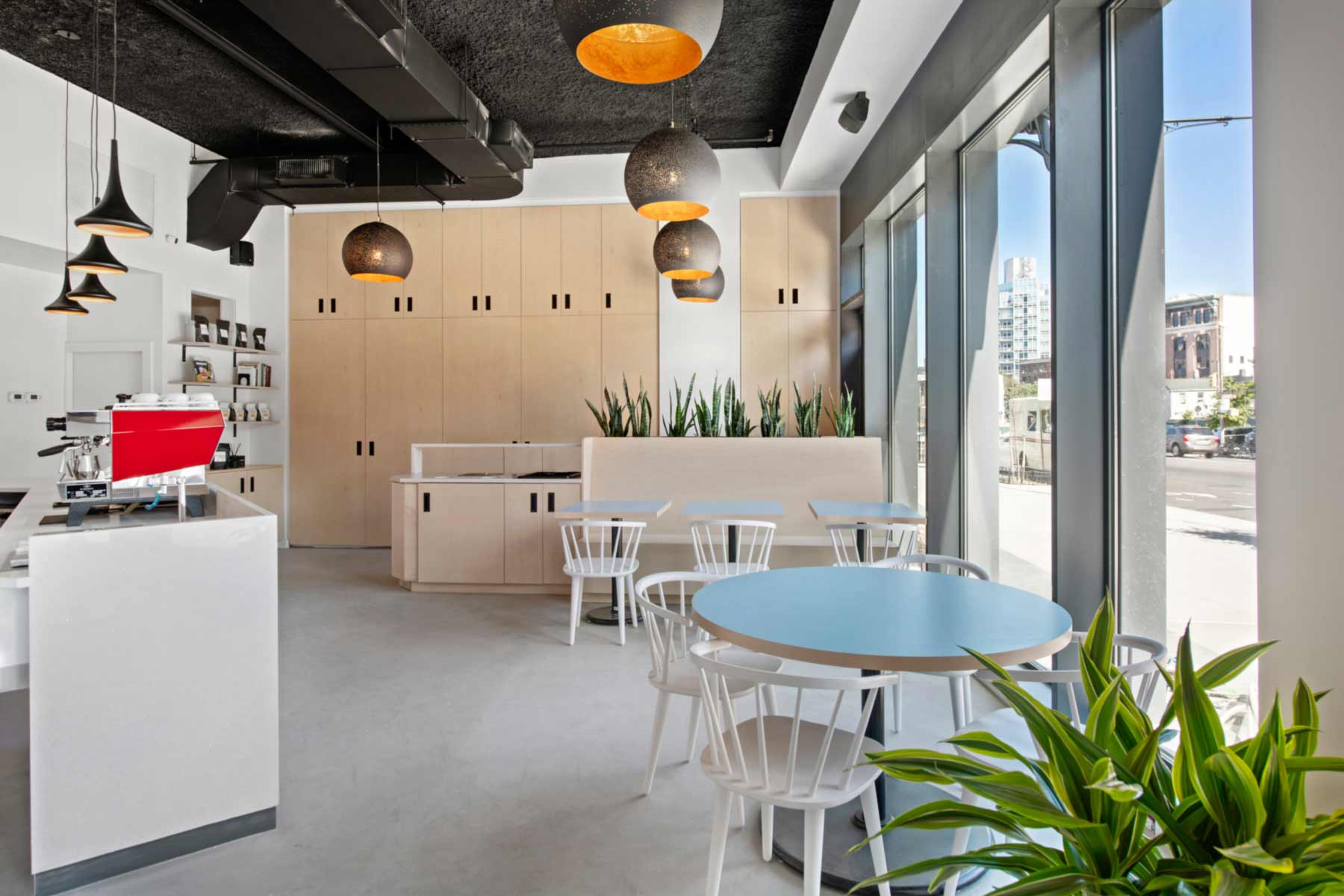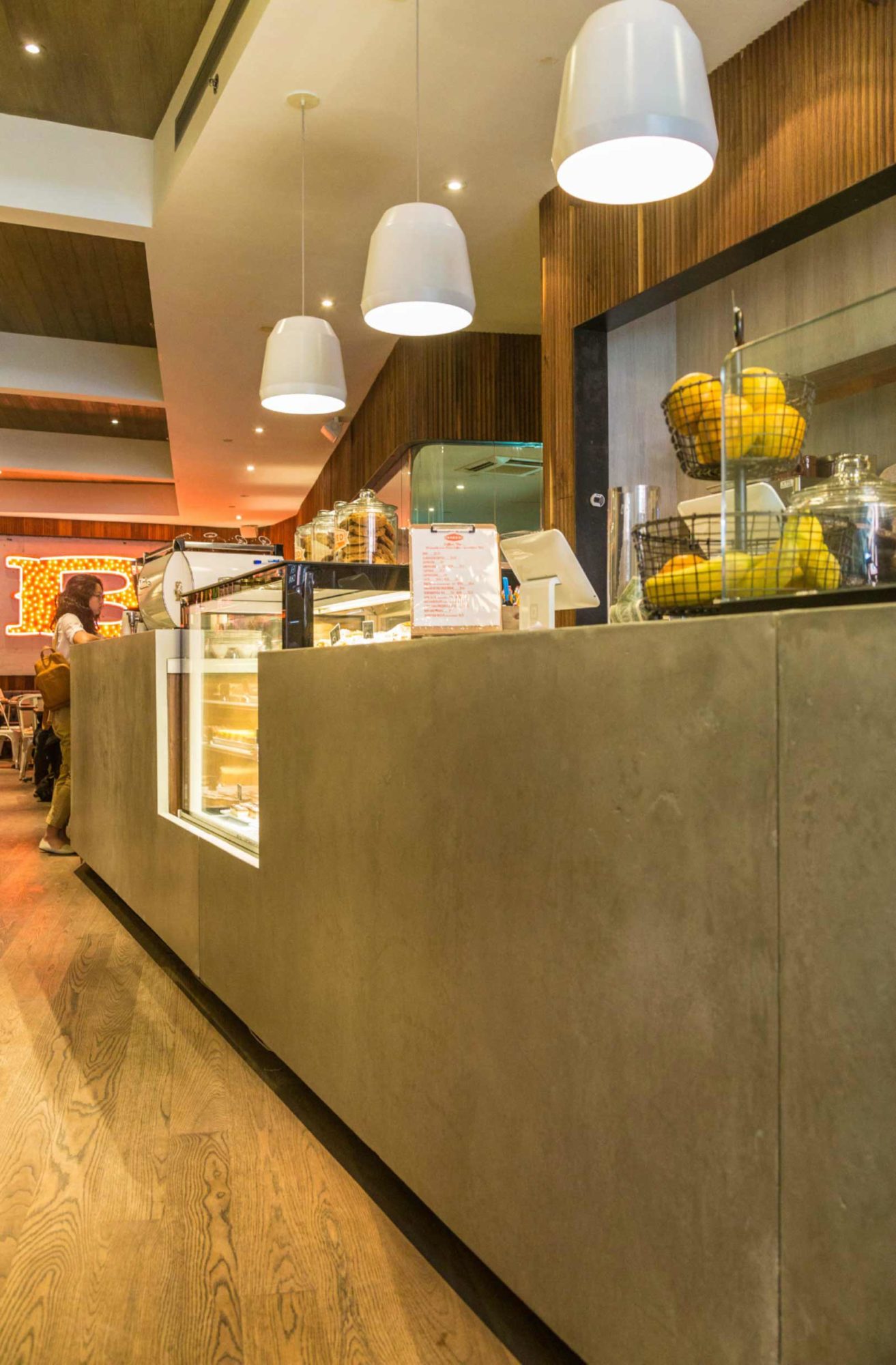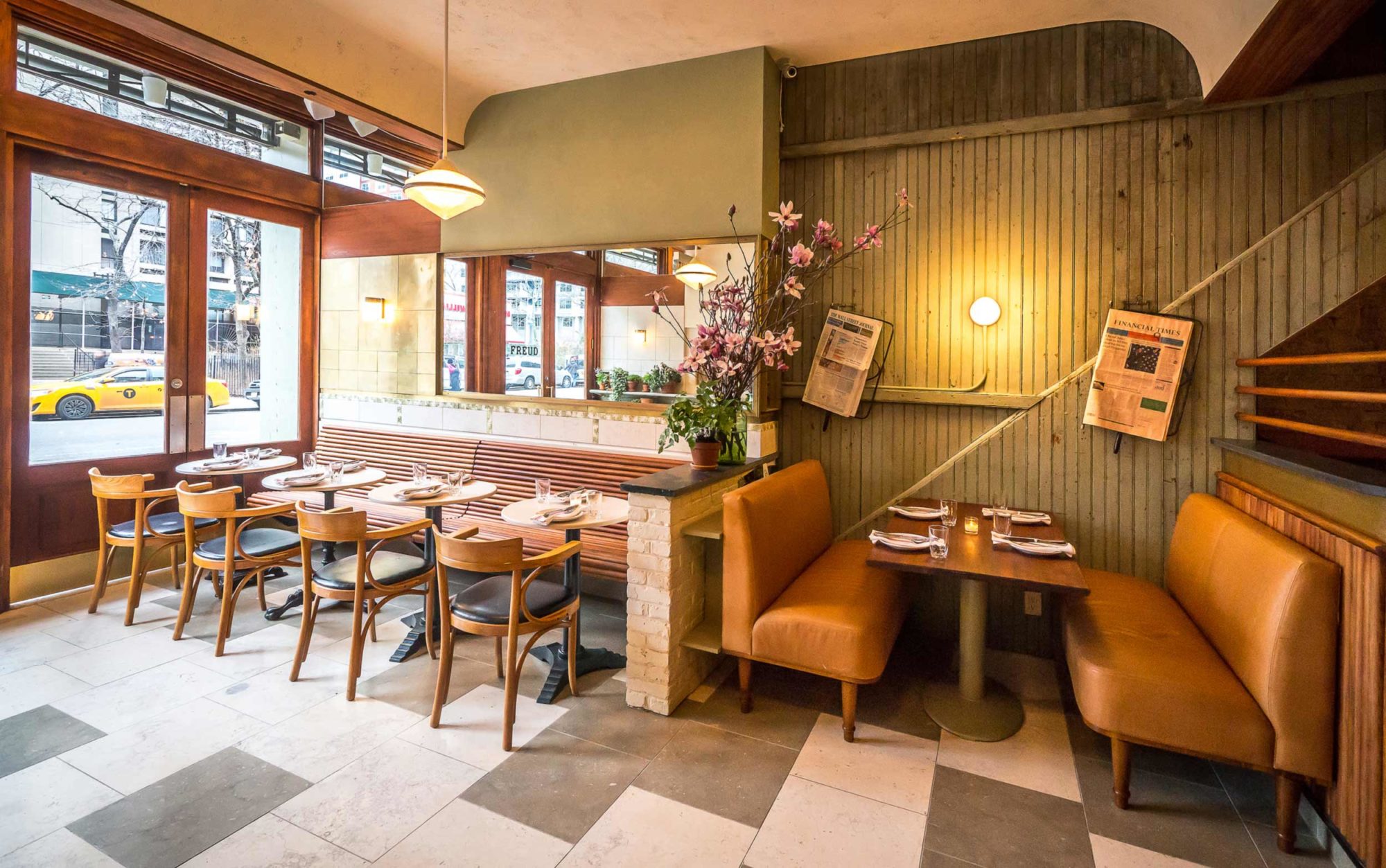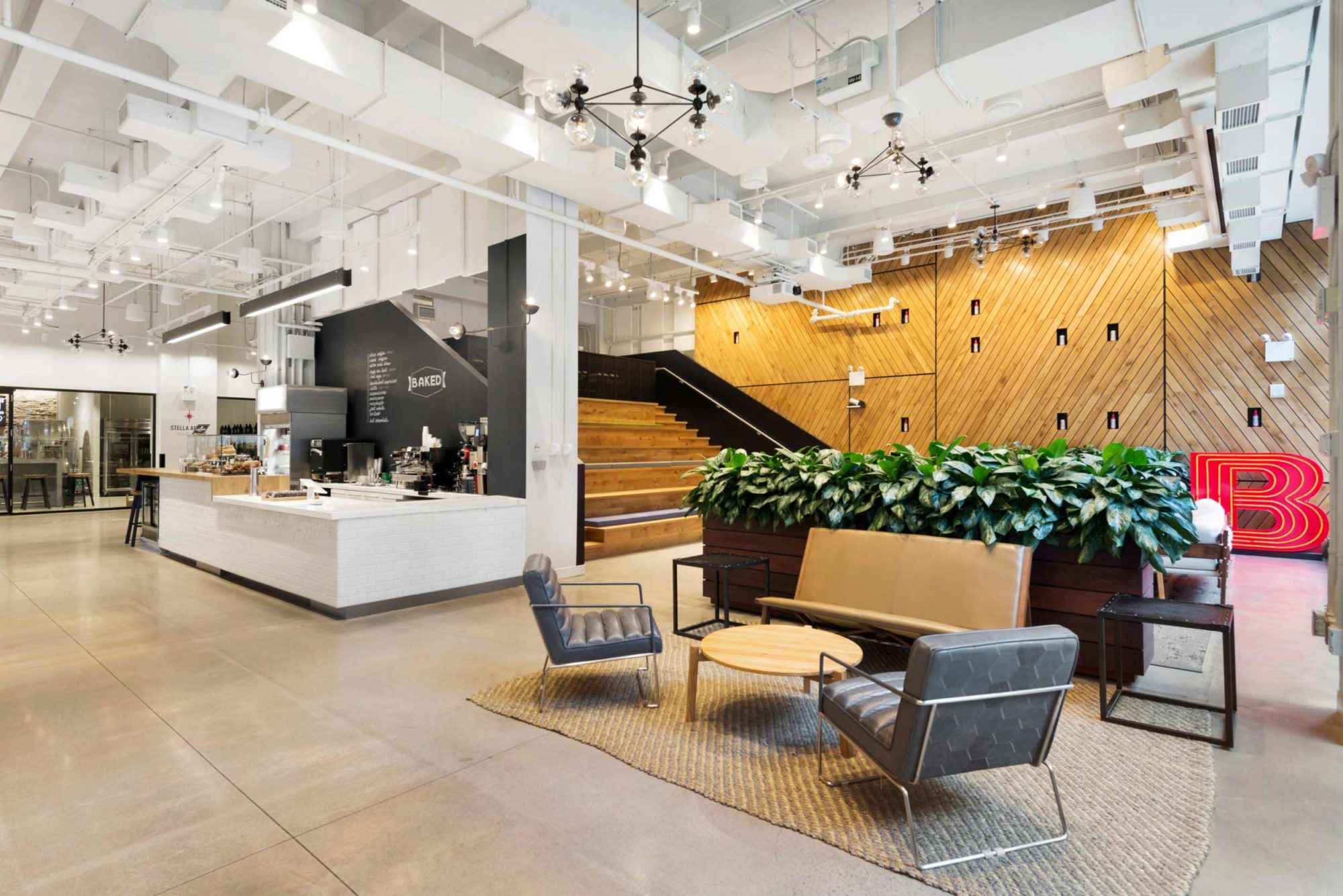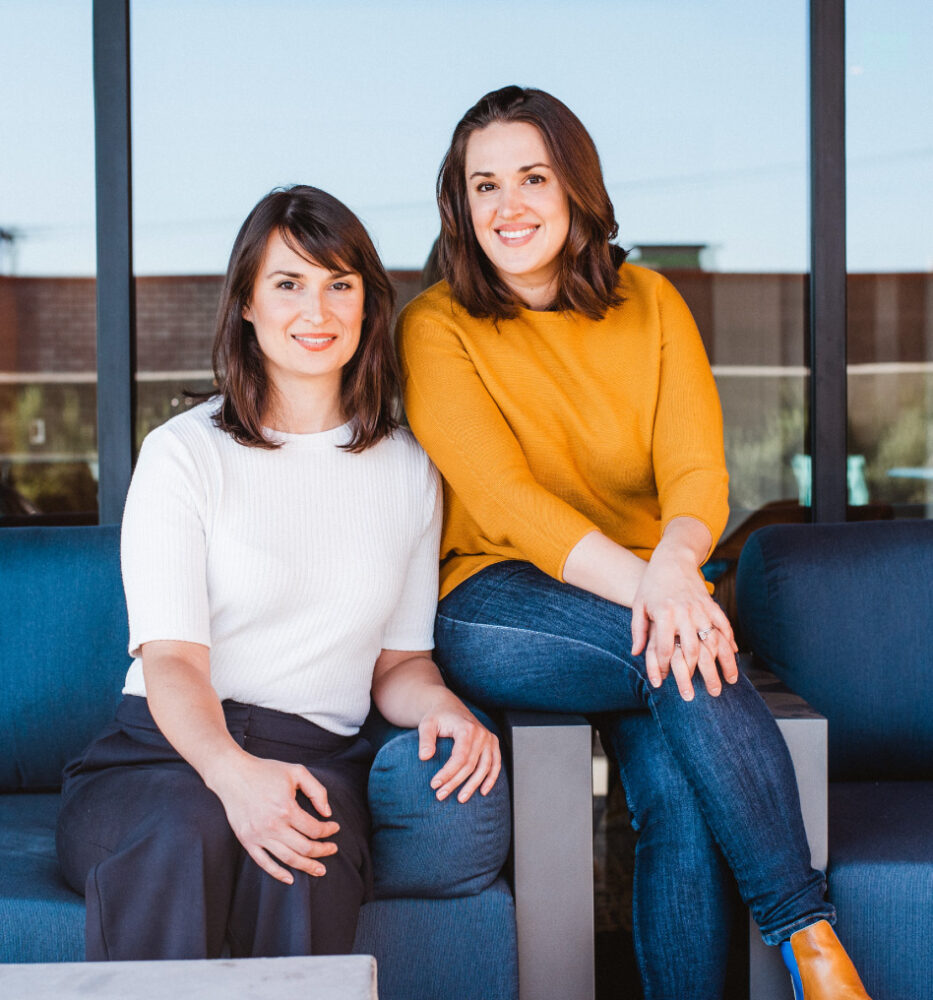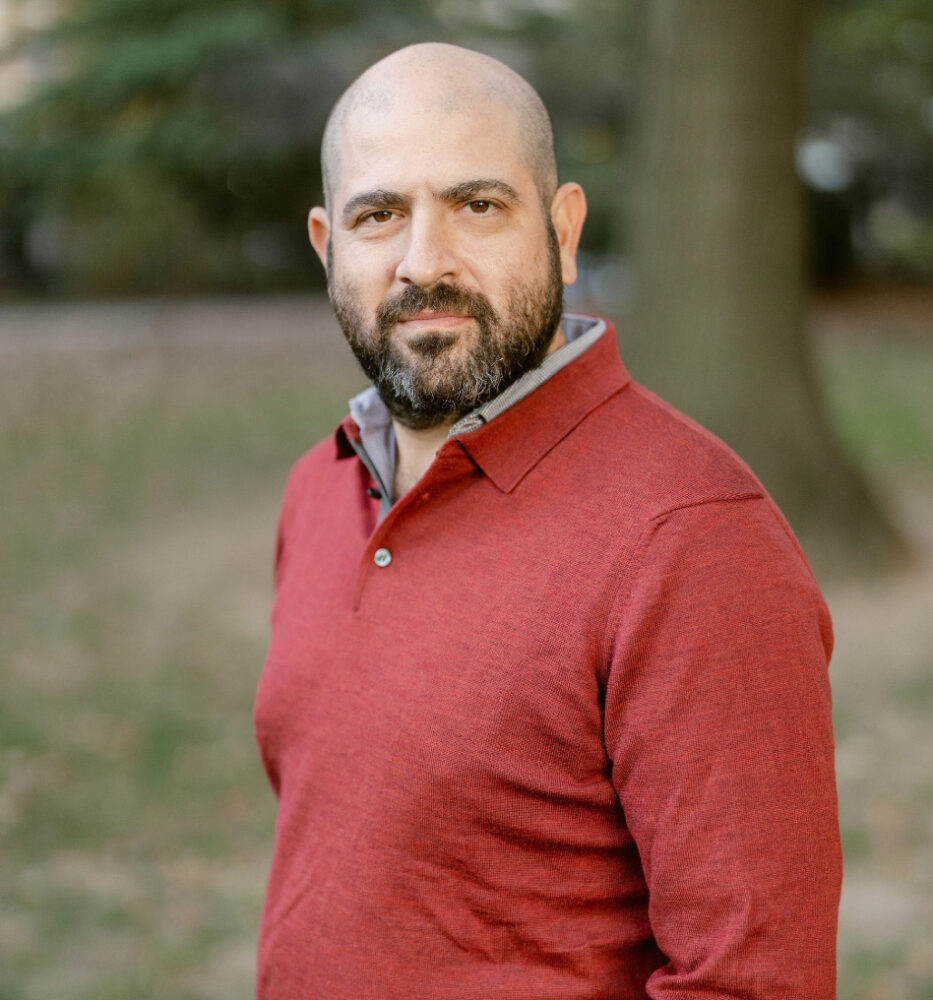Future Hospitality
podcast
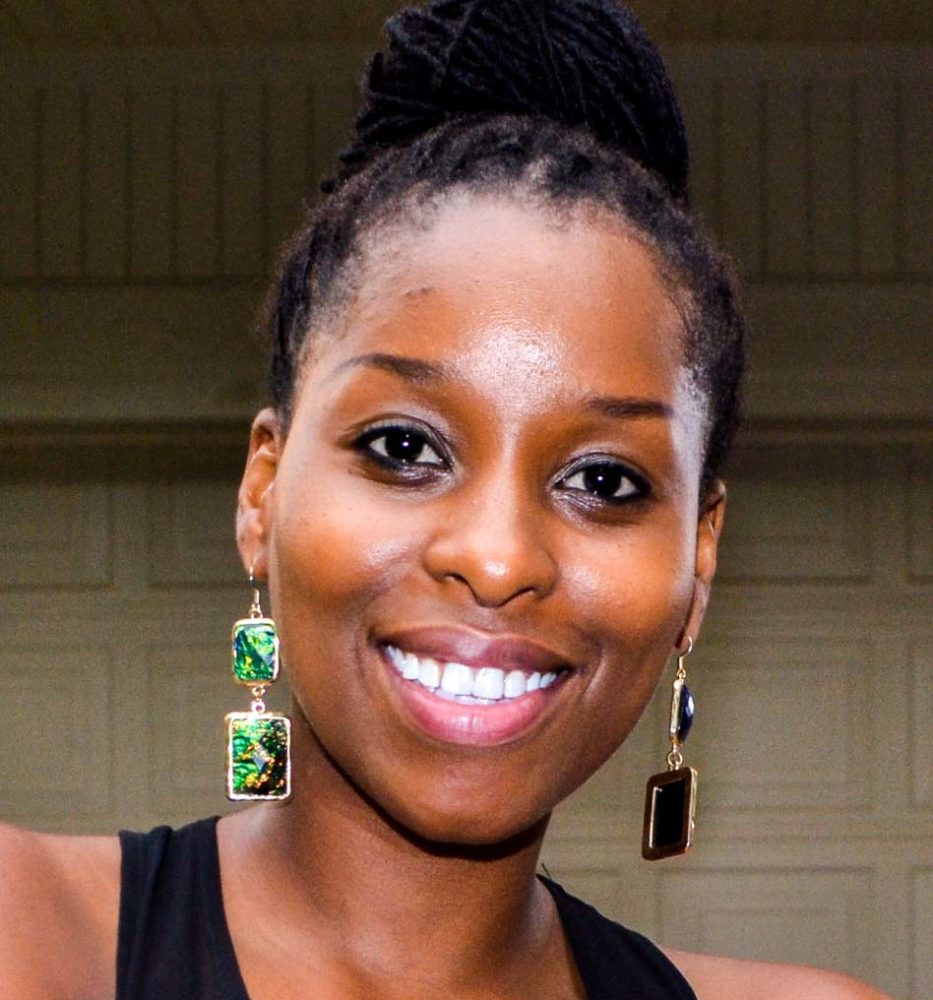
#11: Taking Big Steps with Small and Flexible Teams: Nina Kinoti-Metz
August 21, 2020
Jeremy Wells: Nina, thank you so much for joining us today. We’re super excited to have you on the podcast.
Nina Kinoti-Metz: Thanks for having me. I’m very excited as well.
Jeremy Wells: Yeah. So we had found out about you and Studio Parallel, I think it was through a hospitality design interview and we loved reading through that interview and just getting some insight into what you guys are doing and some of the background around you and Studio Parallel. So I thought it’d be really neat to reach out and just get some of your insights on the podcast and share that with our listeners. A lot of people might not be super familiar with Studio Parallel and what you guys do. So how would you kind of sum that up and kind of give people a quick brief history about what it is you guys do?
How it all started…
Nina Kinoti-Metz: We are a husband-and-wife partners team that we’ve been doing work together for about 15 years in all sort of spectrum of design. We sort of have an interesting model for the way we run the firm, which we can talk a little bit more about, but we started about 15 years ago when my husband really just wanted to diversify his experience and also his work, because when you work in big architecture firms and sometimes you can get pigeonholed into different sort of work styles or work modes, and he wanted to be able to do all sorts of different design. And then at that time, he wasn’t getting experience in any of those things. So he started doing what I call the sporadic weekend job. So he’d finished his weekly shift and then start doing the other projects on the side. That’s sort of how Studio Parallel started.
And then around 2010, I had worked in some big architecture firms and we decided to start a family. We started to seriously think about the possibility of making this a real thing where I could become the main principal and work on projects, and we could have our own firm and not necessarily be tied to working in the firms. But a couple years before that, the big recession of 2008 had really scared us. So instead of like investing in a sort of brick-and-mortar find an office space working and hiring people, getting interns and the whole nine and sort of investing a lot of our personal capital into starting something, we thought we would go the route of sort of just bringing people on as needed and it’s been working thus far. We do a lot of hospitality and retail and a lot of residential, as many people do in New York. And we’ve also started venturing into doing educational projects. We’re pretty lucky. It’s a pretty great setup.
Jeremy Wells: Yeah. Yeah, that’s great. I’d love to chat a little bit more about that here in a bit and kind of dive into why you guys chose that route and how it’s benefited your projects and your team and whatnot. His name’s Chris, right?
Nina Kinoti-Metz: Yes.
Jeremy Wells: What were some of the challenges kind of early on when you guys first decided to partner and kind of go in on this together and really go at it and put your foot on the pedal, so to speak? What were some of the big challenges, maybe out of the gate, that you encountered, if there were any and how did you overcome those?
“The first biggest challenge I think for us was now working directly with the clients and taking ownership and having owners of the entire thing from soup to nuts and being able to balance that and actually make enough money to sustain a business and to live our lives”
Nina Kinoti-Metz: So right off the bat, probably the biggest challenge was the balance between shifting from having a day job where you went to an office and you worked from nine to whatever time in the evening. You had people above you that sort of took lead on other things. The first biggest challenge I think for us was now working directly with the clients and taking ownership and having owners of the entire thing from soup to nuts and being able to balance that and actually make enough money to sustain a business and to live our lives. And at the time, we were starting a family. So a lot of the stress was trying to attract clients. We really worked hard to give really good service to these people and really talk up, if you have any friends that are looking to do a renovation if you have any other colleagues in the restaurant and cafe business that are looking for someone. So we really stepped up the way we sort of presented ourselves to the clients to sort of build up a following, so to speak, and joining some BD groups in order to see if we can attract business and that’s I think the hardest part of going off on your own right off the bat. It’s like really scary and you have to really think about what number of projects do I need in a year or in a few months in order to sustain this business. And I think that was another thing that informed later the decision to keep the model that we started.
Another challenge I would say is that when you’re starting out right at the beginning, you’re testing the waters. They’re testing the waters with you. They’re taking a chance on you. You’ve been given a project and you don’t really have that much in your portfolio to show them that is not work you’ve done standalone by yourself. So a lot of times you’re talking about work you’ve done under the umbrella of another person’s company. So really trying to get projects that we could get experienced so we could talk about them at the same time, also have portfolio that we could present through our website and then marketing it in a way. And we’ve been really lucky that so far we’ve had sort of the guerrilla marketing style that people have really sent work our way. And we’ve done a few things here and there, but it hasn’t been any major. We haven’t hired a publicist or anything like that or needed to do any kind of aggressive marketing. So it’s worked out, but it’s definitely a patience game and it’s working hard to really put your best foot forward with the clients and speak up on things that come up and take a chance on clients and they take a chance on you.
“It’s definitely a patience game and it’s working hard to really put your best foot forward with the clients”
So the beginning was really tough because starting a family, that’s a whole new baby, and then your business is a whole new baby. So it was really hard at the beginning.
Dustin Myers: Yeah. I can certainly imagine. And I think it’s a testament to your guys’ work that you’ve been able to land really cool projects without having some of the “necessities of a studio”. What do you think has helped overcome any obstacles there or any roadblocks to helping you get the kind of projects that you want?
Nina Kinoti-Metz: Yeah. We’re very lucky. I mean, I think there are sort of two schools of thought more than that, but the ones that I really do see happen with a lot of my colleagues and people that I know, they’re the people that take the route of hiring someone and really trying to get themselves into a magazine and getting advert, getting their name in a place where they feel like the masses are going to see them in Interior Design Magazine, Architectural Digest, all these big rags that are amazing when you buy them and you see your name in them and you get that notoriety and that’s really wonderful. But then in many, many discussions I’ve had with lots of people about how to go about that, who do I need to talk to in order for that to happen. I want to get that feature in Domino Magazine. I want to get that feature. It was a conscious thought right at time in a decision to sort of not pursue that path because we quite frankly did not have the money for it. So I think the thing we did do was give extremely good service to the clients and then say the words, “I’m hunting the next project. You know that restaurant tour over there? Great. Give them my number if they’re looking to renovate,” and we really did luck out because people sent people our way. It took a very long time to get to a place where we could say, “This is a scale of project we take on and this is a scale we don’t take on or this is a kind of project we want to work on and be a little bit more picky.” But for a very long time, we kind of did anything that came our way and tried our best to make it what we thought was beautiful, modern, functional design. And luckily, the clients were open to it. I have done my share of steering clients in the direction I want to go, and even if they might’ve wanted to go sort of a different way, that has also been sort of a good thing for us. And I think you just have to make your own destiny as it relates to the kind of work you want to do and more will come that’s what’s happened.
“For a very long time, we kind of did anything that came our way and tried our best to make it what we thought was beautiful, modern, functional design.”
Dustin Myers: Yeah. I think anybody who has kind of gone through that process of starting their own business. Like you mentioned earlier, how it’s a little scary when you’re first starting and you’re trying to figure out how to pay bills and all this stuff. You kind of do have to, I mean, kind of threads through the mud, so to speak, and just kind of take whatever you can get. But I wonder, what was that like when you got your first like dream project that like checked all the boxes for you guys and something you would stand out as your own work, you weren’t working under someone else to complete it? What was it like kind of going through that process and seeing it all come to fruition? How did that process make you feel?
Nina Kinoti-Metz: I think the very first thing about getting these projects and doing it on our own, from the beginning to end under our own stamp as architecture, design team, just completing the first project, which was in the space of residential, just gratifying because you ask the question to the client, “Do you love your space? Is this what you wanted in the end?” It’s a lot of emotional up and down and a lot of hard work. And they love their home and that’s a beautiful, gratifying feeling. I think in the space of hospitality and retail some of the restaurants we’ve done, for me, those have been quite surprisingly gratifying because it’s a different kind of pace and a different set of challenges as it relates to the client needs.
So I think one of the first restaurants that we did that we had sort of an artistic collaborative on board, we were the architect of record, the design architect, and then we have this artist on board that was sort of steering the client’s vision for what he wanted the restaurant to be in and finishing that with all these different cooks in the kitchen and all these different ideas flying around, knowing that the client had a very particular budget, because in the restaurant and retail business, especially in restaurants, there’s a huge budget that’s put towards equipment and things that have nothing to do with design. I need to be able to cook the food, so I need all this stuff, and all the different things that go into actually making a restaurant function have nothing to do with whether you make it pretty or not or really interesting space. So having to just sort of manage that part of it, but then also try and create a space that meets the client’s vision, finishing that the very first time was such the most exhausting experience, but also gratifying because decisions are made at breakneck speed and we have to roll with it, but keep the vision cohesive and crystallized so that at the end of it, you still have this idea that you can be proud of, that you put together.
So just opening the doors and having people walk in, I think the first coffee shop probably that I did café, I went and had coffee there secretly just in the back to gauge people’s sort of reaction and feelings about the space. And for me, that’s the most gratifying thing about doing a project like that is being able to see people feel something and experience it and look around and sit. You can see they feel something and that is really great for me when it comes to these kinds of projects. At the very beginning, I was chasing that feeling and we definitely got it, and all the sweat and tears were worth it, so to speak.
“The most gratifying thing about doing a project like that is being able to see people feel something and experience it”
Dustin Myers: That’s really cool. Tell us a little bit about your process on how you design a space that is going to check all those boxes and really create the right experience for the end-user, whether it’s a hospitality application or something else.
Nina Kinoti-Metz: We really start with trying to understand who the client is, who the owner is, why, what’s your why, and what are you trying to evoke for yourself. If you were the guest in this space, we have the conversation and really just try and dive into like no holds barred. If all things were equal and you had no budget to worry about, what do you want? What do you want to feel? What do you want to see? How do you want people to experience your space? We have a checklist of items that we want to be able to understand. And I think for me, it’s extremely important to start off on the right foot with really getting a concept, getting on board with a concept with the client that they’re in love with and they’re super excited about because then everything else is sort of a downhill trudge. It’s easier to get to the end since you started on such a high point and you’re not sort of trying to constantly reinforce the concept and constantly fighting to make it match something.
So that’s where we always start with all our projects in every single space and project type. For us, budget is extremely important as well, and that sort of is the very close second conversation we’ll have with the clients, because we really do believe that we’re not going to design a one-million-dollar restaurant if your budget is half of that. We’re not going to design a $450,000-café if your budget is half of that. It’s counterproductive and you end up spinning sort of yarns for each other. And then at the end of the day, you have to cut, cut, cut, and it’s more of a disappointing feeling, especially for the client. We’ve done that before. We’ve done it when we’ve worked with other firms. We did it right at the beginning, sort of rookie mistakes where you kind of promise the stars and the moon to the client. “Oh, yeah, we can do it. Budget is not really an issue. We can definitely do it.” With more experience, you realize that that’s a lot of time wasted. Whereas we like to have a very upfront conversation about, “I will design to your budget and I’ll create a beautiful space for you. I’ll create a functional space for you. I’ll create a space that you’ll be happy to be in,” but I don’t want to play the game where we give all the money to one part of one trade and one part of the space and the other one is lacking. I’d rather have a holistic conversation and that’s I found. It’s a hard conversation to have. It’s a hard conversation to have at the beginning of a project because when you talk money, no one likes to talk money.
“I really try and push them to say the more realistic and honest you are, the better I can serve you.”
Probably in the restaurant and hospitality world, that’s probably the easiest place that people will talk about money. In most other typologies, there’s a hesitation towards actually being honest with your budgets and the money that’s available on the project. I really try and push them to say the more realistic and honest you are, the better I can serve you. So that’s sort of the next step. And I found once we’ve locked in a really crystallized idea and we’re all on the same page, we have a really strong brand idea of what we’re doing or at least we have an extremely strong direction of where we’re trying to go and we know the budget, then everything else sort of falls into place. My favorite part of design really is the space planning and trying to lock in schematically where everything lies. So that part is always fun. And I always present way more ideas than the client has ever expecting. We’re like, “We’ll have three to four schemes for you,” and I always come with six or seven or eight and it always kind of makes them like, “Oh my God, I can’t choose.” And that makes me happy. It makes me happy that there’s a lot of good ideas on the table that we can pick and choose and dissect. So then we take it from there.
I find that if those three things work well, then the DNA of the space is really set up and then you can adjust in real time and go from there. We usually end up with a pretty good product that the client’s really happy with.
Jeremy Wells: Yeah, that’s great to hear kind of the thinking that goes into that. And you mentioned the DNA of the space and kind of the brand. You used some of those terms. The process that we kind of go through with a lot of our clients often happens, sometimes it happens before architects are involved than interior designers. Sometimes it happens after and sometimes we’re working in tandem with them. So developing out that brand and that voice and that tone for the space and for the concept, when you guys are working on these various concepts? I’m sure you’ve gone through different versions of what I just described about what do you guys see as kind of working best when it comes to kind of creating that well-rounded guest experience? What stages in the processes are kind of all these cooks in the kitchen? What stage of like the branding and architecture kind of be paired well together?
Nina Kinoti-Metz: Yeah. I used to have a very straightforward answer for something like this because I used to think it was fun to create the brand with the client at the same time as the designer and architect. And I found though that somehow if the client has this very, very strong brand and idea for who they are first, then we can tweak it and make it better. It usually is much harder sort of discovering it together. It’s possible. We’ve done it. It’s okay. I had one client. We were doing a café in Brooklyn in an area called Flatbush. The area is sort of more of a residential space and they lived close by and they had both worked in Michelin-Star restaurants in Manhattan, and they were both kind of sick of it and had started families and needed like a different sort of headspace in a different zone and they wanted to create this really upscale, but nice European forward. They’re both from Europe and had immigrated here a long time ago and they just wanted to create this space and they had no idea exactly what they wanted it to feel like or look like. And I went through iteration after iteration of, “Okay, are we going with more of a sustainable, eco feeling, green space on the inside, like with plants and it’s live and it’s so super relaxed?” They didn’t kind of buy into that.
I went through so many different iterations of what I thought they could be. And at the end, we landed on a really nice, simple, modern, clean aesthetic, and it works beautifully and it photographed great, and they love this space. In fact, we’ve had other people, café owners come to us because they visited that space. But the process was relatively painful to try because I think the clients just weren’t sure of themselves and who they wanted to be in this venture. So that was tough. So I very much admire and appreciate the job you guys do because having a great brand from the onset really helps the design, and that project I mentioned the restaurant with the artist on board, he really had a particular vision for the color scheme and what he wanted on the ceiling and sort of some of the art he wanted and that in itself was a really great way to steer the architecture and how we were going to frame this feeling. It was easier to work in that direction because we had a very strong foundation.
So I would say I definitely now prefer when a client comes in, and even if I’m not on board, maybe I’m like, “Wow, that idea is not great or that idea is not my favorite,” I like when someone has a very strong point of view and perspective because it gives me some really good meaty stuff to work with.
Jeremy Wells: Yeah. That’s awesome. That’s some great insight there. Really cool. We kind of briefly touched on this earlier. I’d like to kind of circle back to this concept of the flexible teams and kind of the flexible workspace that you guys utilize for your agency and what that looks like, what it means to you guys, and how that type of management workflow for you guys work to benefit you and benefit your projects and your clients.
Nina Kinoti-Metz: Yeah. It’s really daunting to own a brick-and-mortar office in New York in Brooklyn. It’s really tough. We’ve seen people do it. We’ve seen friends do it. We visited spaces that are great. The second you have a space and you have a desire to have employees, there’s a lot of things that go along with us. And honestly, at the very beginning of starting our firm together officially and actually diving in with both feet, I wasn’t convinced that that’s what I wanted. I didn’t necessarily want to be like, “I don’t want to be someone’s boss. I want to be in the thick of it. I want to be the one designing. I want to do the work.” So we started off on that project type. We would say, “This one requires two people. We’re both here. We can do it. This other project is a one-person project. It’s great. We need seven people on this other. It’s a big one. It’s a lot more fast-paced and it’s a much bigger budget. It can stand to have more people on it,” et cetera.
And we started to bring in people sort of in a consultant basis. And how that helped us was we’ve brought on licensed architects that are fully standalone. They have their own shop or they have their own business or they just work for another company and they want to do specific things that they’re not able to do. And it’s almost like having a Rolodex of experience in different forums and bringing them on as needed without incurring the expense or the stress or the overall like really difficult time of maintaining that kind of a brilliant staff on board the whole time. I mean, we would never be able to afford to pay the kind of people that consult with. Just on a regular basis in a year, we’d have to have 10 big projects that could sustain that kind of thing. So the model we started with really helped us be able to ramp up or ramp down with very minimal effort and very minimal stress and very minimal overhead, and that’s a huge thing.
“The model we started with really helped us be able to ramp up or ramp down with very minimal effort and very minimal stress and very minimal overhead, and that’s a huge thing.”
Having overheard and being an ethical and a responsible boss and hiring someone and paying them what they should be paid hourly or by the project, having an intern, like I’m very against the concept of having interns that are your gophers and the people that do all this extremely hard legwork or design work that is tedious and takes a long time, not really giving them their money’s worth or teaching them in a way that they can and take something from it. So I didn’t want anything to do with that. So we’ve created this situation where we can bring people in as needed. We have an office space in Brooklyn, in our house. We’re fortunate enough to have a brownstone space where we have a dedicated floor and we have our office space there. And so many consultants we work with here in Brooklyn, before the pandemic, we could have meetings in this space and talk.
And now that the entire world has transitioned to this working from home, working at a computer, at whatever space you have within your home, we’ve sort of have not changed any way that we work at all. Other than being on plenty more Zoom calls, our workspace hasn’t changed a bit. And the people we’ve been working with there, their situation hasn’t changed a bit. It’s pretty phenomenal because I’ve seen people have to really change and adjust the way they’re working and put projects on hold and really like try and crack their heads about how they were going to make something work because they had a space, they had to pay rent on and things were just very complicated and we had all that infrastructure. I find that technology is the biggest thing right now with many companies, especially in the office realm. And I’ve actually just completed a couple of office spaces. All this money and work they put into having these beautiful spaces now it’s all having to get segued into fixing the technology so people can all work from home.
“We’ve been very fortunate that the model we have has enabled us to keep going with basically no stops at all”
So we’ve been very fortunate that the model we have has enabled us to keep going with basically no stops at all and just maybe a little bit more expense in printers and paper and more calls. So it’s been really advantageous. And I do think people are going to use this model more from now on. I think this pandemic has made everyone realize that great work can happen and it could come out of someone’s living room. And that sort of stigma of people not having a brick-and-mortar office has sort of disappeared. It’s gone now. And I think that’s great. It’s good for everyone. It’s good for small firms. It’s good for people that are starting up. It’s good for people that are coming out of school that might feel daunted, that they don’t necessarily want to go and work at a big architecture firm or they don’t want to go and intern for someone that they can maybe take their hand at exploring things and they can sort of build something for themselves. So far, it’s been pretty successful and I think the trend is going in that way, in that direction.
Dustin Myers: Yeah, it makes a lot of sense to be able to build custom teams for each project and not be on the hook for a crazy amount of payroll when there is highs and lows in the workload and all of that. So I think that’s a really smart approach. Like you said, through the last few months, we’ve proved that really great work can happen without a brick-and-mortar. I agree with you that we’re going to see a lot more of that in the future and it’s going to evolve the work scene.
Nina Kinoti-Metz: Absolutely. And the one other thing I would see on that, which is really fundamental, I think for everyone is, and I’ve had this conversation with many people who have asked me, “Wouldn’t it be so great if you had an office space on the street somewhere and it’s fancy and great and beautiful? You’d have a gorgeous office space.” I’m like, “Of course, I would. It would be amazing.” But at the end of the day, I’m not only in this to produce good work and really work hard, but I am earning a living and I want to put money in my pocket from the work that I’m doing. Like you said, all that overhead, I don’t have any of that. So I think people should be empowered to serve themselves as well and understand that you need a business model that works so that you are profitable and that you’re successful. And it’s not just about making successful projects for your clients. It’s also doing successful things for yourself. And that’s made me very proud that we made the decision that has kept us in the realm where we are profitable and where we are successful in what we’re doing and it’s all for us. It’s not going down to something else if you know what I mean.
“It’s not just about making successful projects for your clients. It’s also doing successful things for yourself.”
Dustin Myers: Exactly. So Nina, as we kind of switch more to the future, who are three people in the industry who inspire you?
Nina Kinoti-Metz: That’s tough. Three people, it’s always tough to answer questions like that. But I’m going to say that the person who has inspired me the most right now is a designer, artist. Her name is Malene Barnett. She used to own a textile and carpet design firm, very successful in Manhattan. She’s sort of switched gears and wrote a pretty scathing article that she sent out that basically was condemning the entire architecture and design of industry of New York for the lack of representation for minorities and people of color. And it was a hardcore sort of take on the reality of our industry. And I’m very inspired by her because instead of just sense that writing an article and complaining about how she feels about the situation, she started a guild called BADG, and it’s the Black Artists and Designers Guild. And her goal is not necessarily to sort of only focus on people of color and black people, but to really create a space for unrepresented people and people that there’s a lack of representation for designers and architects of color in general, in New York and probably in the United States, and in the world in general. I’m very inspired by her continued efforts to really include people and feature people that you wouldn’t normally see on the big magazines that are invited to do talks.
I’m not necessarily inspired by specifically the work she’s doing as an artist. Now she’s shifted gears to creating products that are sort of vessels, artistic vessels and stuff, but I just really am inspired by her being tired of the status quo, of the way things where knowing that there are a plethora of people out there. And I think it also expands past the race thing. And it really is underrepresented people in every single field that don’t really get credit for all the work that they put in and don’t have a platform to stand up. For a very long time, I think interior architects and interior designers did not get the dues that they should have because somehow they seemed less than. So I like that she’s sort of standing up for that and it’s very inspiring and I joined the guild and I just feel really empowered just sort of trying to help push representation and be better in our industry. So that’s one big one. She’s fantastic.
THE other part of the question is it’s hard right now to feel a little bit inspired, I would say, because of we’re stuck in doors and it’s really difficult. all I do now is whenever I’m looking for inspiration or I’m researching things, is I’m looking at outdoor spaces in the West, somewhere in Utah, fantastic hotel, that kind of thing, like really like looking at travel magazines and imagining where I could go next year or the year after. I’m trying to feed my soul by imagining where we will go after this and that kind of thing and it’s been less about who because no one’s opening their new restaurant and no one’s opening their new store and all of that. So I’ve sort of been steering away from that and more kind of thinking about causes and also thinking about once we’re out of this, what can I take advantage of as far as what’s available to us that’s really good experiences? But no doubt, looking at work from say AvroKO, the company AvroKO, their work is fantastic and rich and lush and I think they’re very inspiring. Most of their projects are just so full of life. Whenever I see anything, whenever I’m scrolling through magazines and the internet, I see their work. I’m inspired by them a lot.
I would say that that’s pretty much. It’s hard to feel inspired in these hard times, but right before the pandemic started, one of my thoughts was I would love to be the person that was called on to design The Wing. You know what I’m talking about? The Wing, it’s like the WeWork version that’s centered around women and it’s designed mostly for women. And I think that’s fantastic.
Laetitia Gorra and Sarah Needleman, they’re the heads of Roarke Design and they worked on The Wing and I think they worked on The Wing and not just New York. They’re just fantastic, beautiful, bold spaces that are not afraid to take this very particular direction and say, “This is a space for women and this is a space that is going to be bright and loud and lush and really beautiful.” I really like that having a very particular point of view and not being afraid to sort of say, “I’m designing this for this particular thing and this particular person.” That’s pretty cool.
Jeremy Wells: Yeah. That’s really cool. Is there anything else, talking about the future of the industry, even personally, if there’s anything exciting for you? I know it’s hard to, like you said, get inspired in certain ways, but is there anything you’re looking forward to in the near future or the distant future for you?
Nina Kinoti-Metz: I’m actually really intrigued by the concept that I think many different designers and architects are starting to explore this, but I would love someone to tap me on the shoulder to maybe try and do something like this. But I really am intrigued by the concept of hospitality spaces that spread over distance. So say in New York or in Brooklyn, if you had a hotel that was housed in five or six different buildings across two or three blocks in a neighborhood. I’m really intrigued with the idea of sort of an expanded idea of what a hotel or an inn. I think Airbnb really blew out of our minds, Airbnb Plus, and these different HomeAway type of websites where you can go and stay in a place that’s gorgeous and really well designed and feel like you’re home and that kind of thing. And then all these different hotels that are cropping up that are boutique feeling, but maybe not boutique price. I think now with a pandemic and what we’ve been experiencing in the world and spaces that are now completely empty, you walk in Brooklyn or you walk in Manhattan and half the places on one street are for rent and they’re empty. I wonder if we can start to utilize these spaces in a way that we can, specifically in the hospitality and the hotel world, I think that would be an intriguing thing to start to create spaces that go past the border of just one building and you have a hotel that spans three or four blocks and it’s in different parts.
I find it to be an interesting concept. I’m intrigued to see if that’ll go anywhere at all and I’d love to explore that if someone ever wanted to tap you on the shoulder. And then for me personally, I’m really excited about what the possibilities are going to be for designing of commercial spaces or office spaces and also just cafés and restaurants. In Brooklyn, I have never seen so many restaurants and cafes have outdoor space. It’s a really difficult thing to get sidewalk seating in New York without a huge hassle from the department of buildings and from the neighborhood community board and all sorts of other things. You jumped through hoops for everything. And just having the quarantine and then slowly opening up of cities and the city making it extremely easy and sort of passing the permits right through for all these restaurants to be able to have outdoor space so people are not inside and passing the virus around I think is fantastic. I think it’s phenomenal. I think I’ve never seen so many people sitting outside looking so happy and being outdoors.
The tiniest hole in the wall place has a beautiful sitting outside that they get a part of the street. I’m hoping that trend continues one way or another. I’m sure once the world goes back to a place where cars are driving and everyone’s really busy, it might change a little bit, but I’m hoping some of those things we’ve done in this pandemic to sort of make it life bearable have been actually really great ideas and I hope that they continue and then also just evolve the evolution of what a restaurant could be, should be, a café, what it could be or should be knowing that maybe you’ll have seasons of a virus that come and go and how do you actually design for that. So I’m excited about what the future brings now that we’ve had to contend with extremely hard time of our lives.
Jeremy Wells: Yeah. Yeah. It’s all really fascinating and interesting things to be thinking about. It keeps us on the edge of our seats for sure as an industry. Nina, thank you so much for joining us today. We really enjoyed the time we got to spend with you. And thank you so much for sharing so much with us.
Nina Kinoti-Metz: Thanks for having me. This was really great.
[End]
